Box clever: Inside our innovative boxing workshop
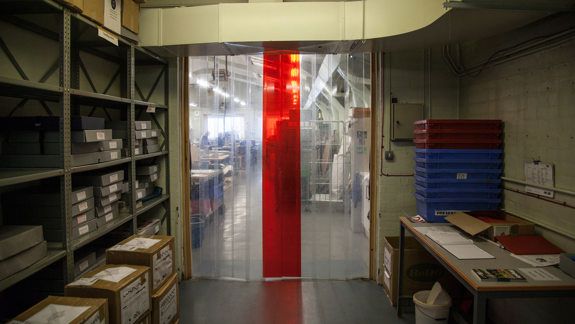
Introduction
Practical and protective
You might imagine the National Library's shelves and stacks lined with thousands of books. The reality is less colourful and more, well… grey.
This is because much of our collections are carefully stored in boxes to ensure their longevity. These boxes are practical tools for handling and transporting items to our reading rooms. They also provide essential protection against environmental threats like dust, mould, light, and temperature changes. The boxes are our first line of defence in the event of a flood, keeping our collections safe and dry.
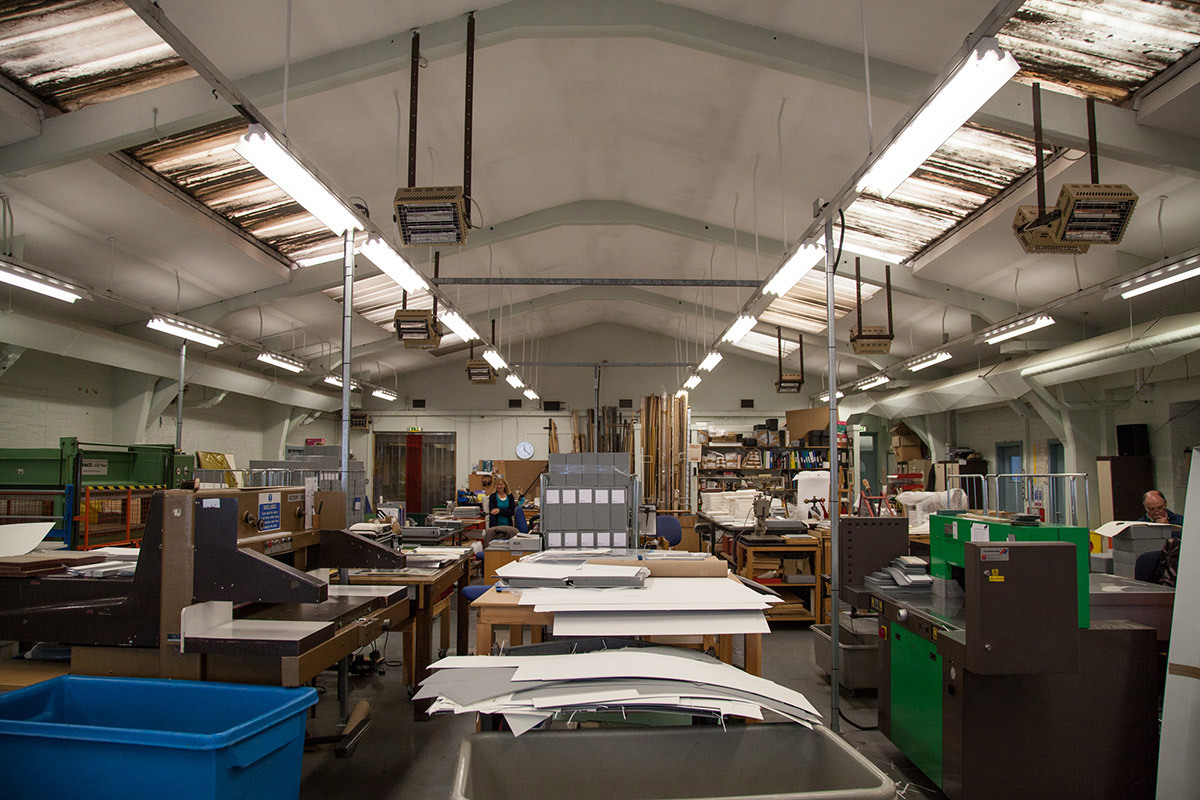
Inside the box-making workshop
We create these protective boxes on a large scale at our in-house box-making workshop.
The die-cutting machine produces 300 standard-sized boxes per hour! The table-cutting machines are used for bespoke sizes, allowing us to respond quickly to the needs of our collection. The process is streamlined and precise, with custom-sized boxes ready in about two minutes.
Gallery
-

Die-cutting machine at our workshop. -
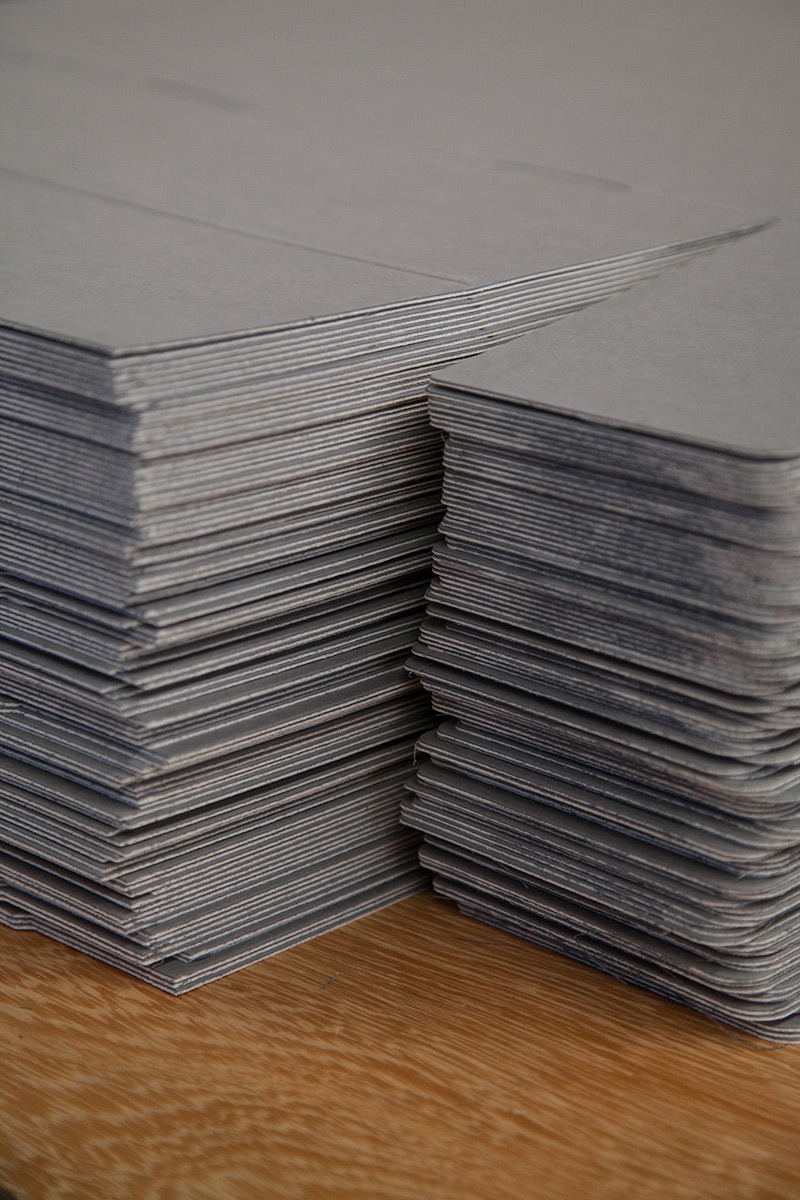
Stacks of freshly cut boxes ready for folding. -
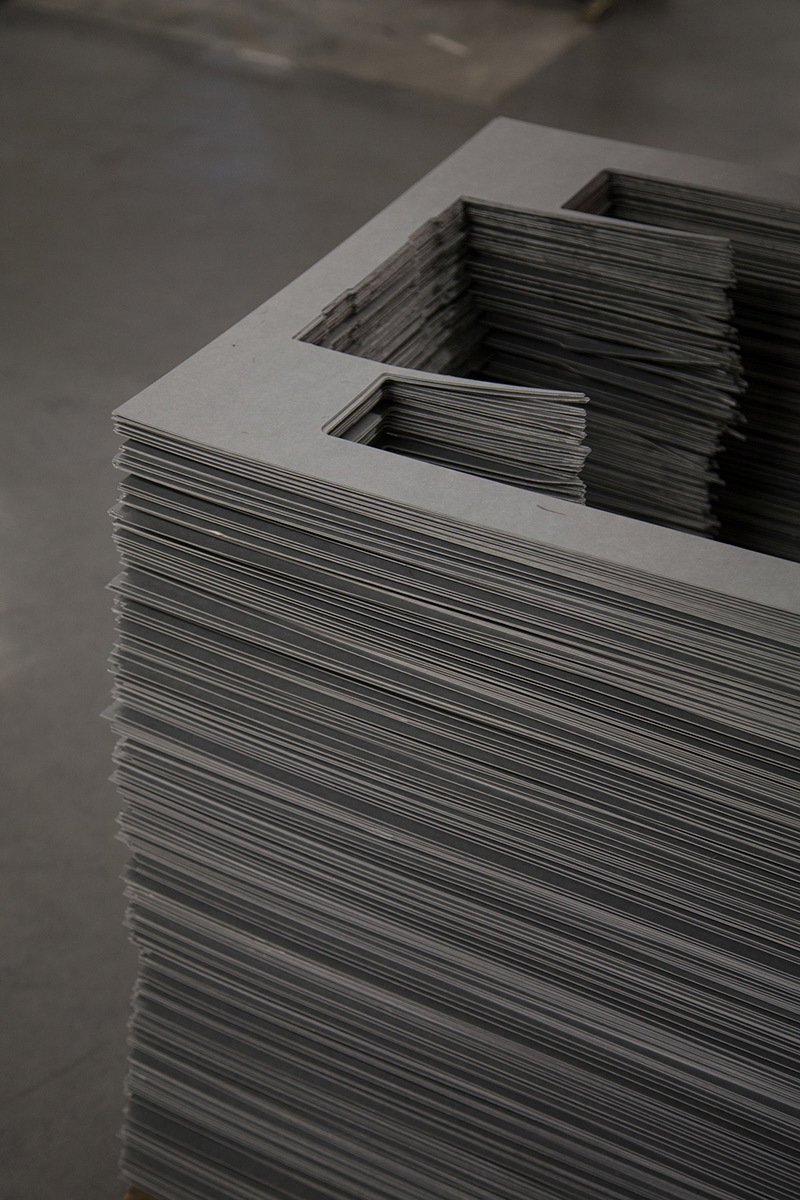
Leftover card with boxes cut out. -
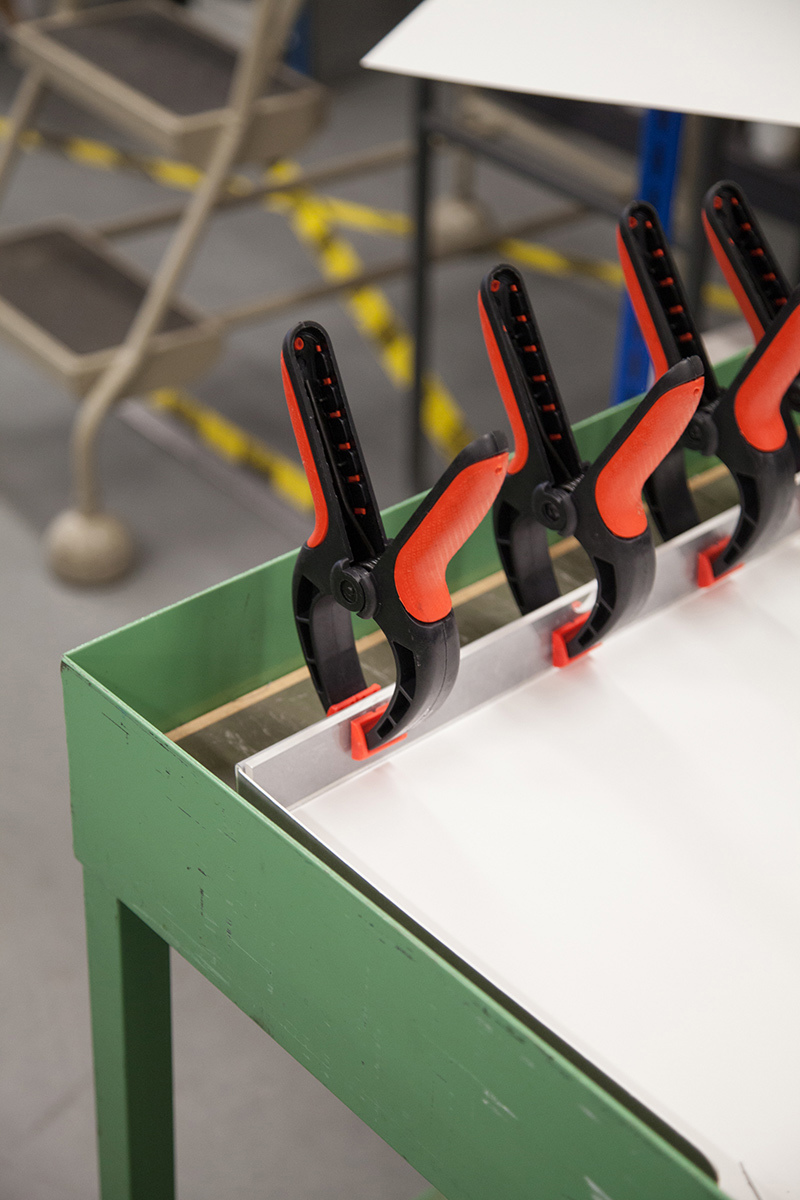
Heavy duty clips doing their bit to make a box. -
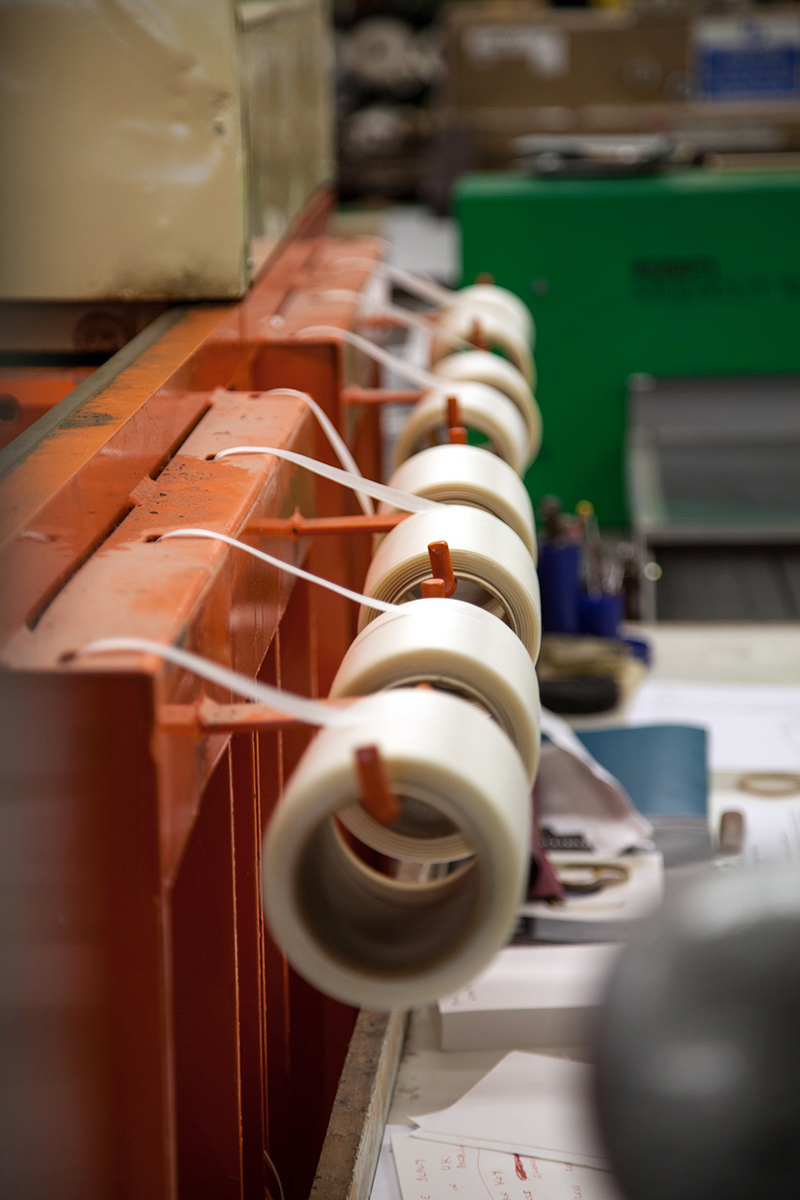
Tape ready for use in the box-making and packing process. -
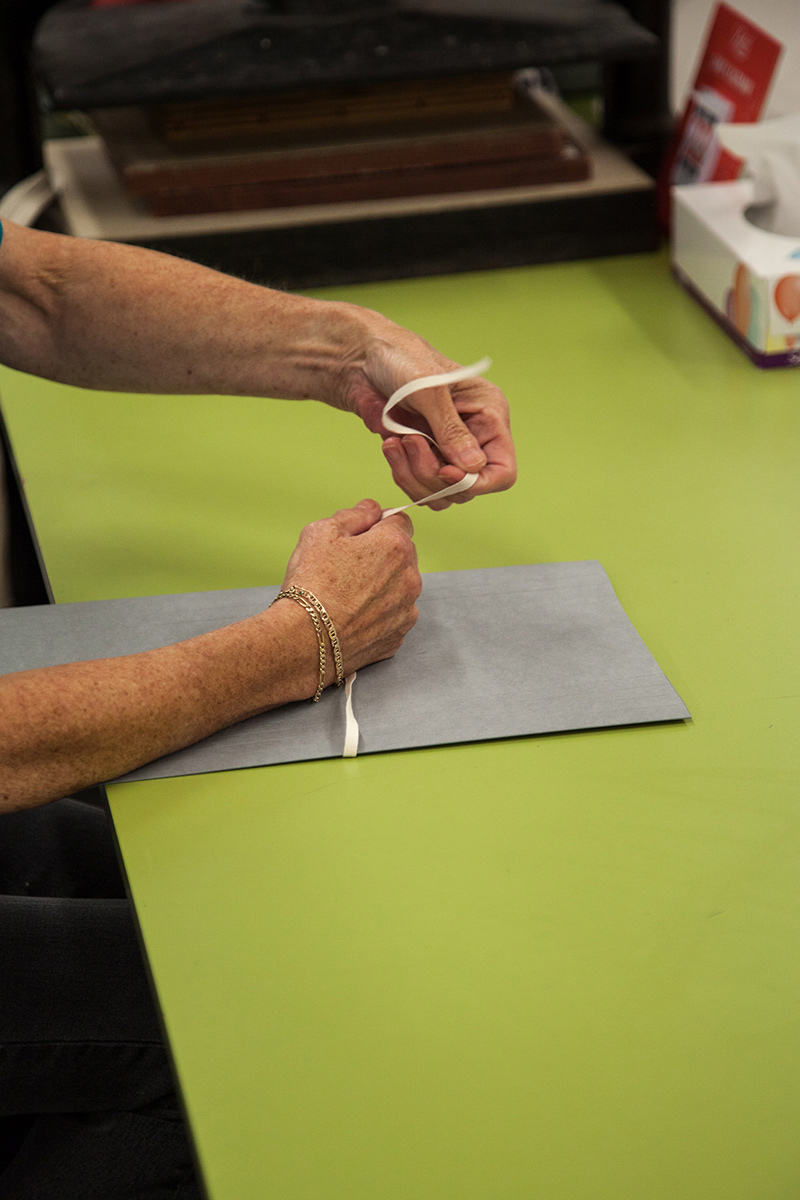
Cotton tape being tied to close a thin folder. -

A stack of beautifully constructed folders. -
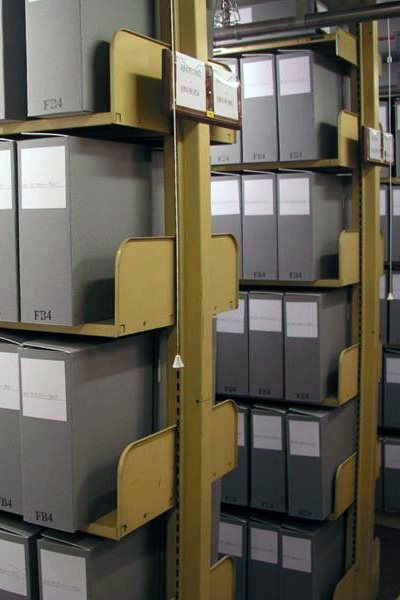
Stacks and stacks of grey boxes made by us to protect the collections.
Inside our box-making workshop
Boxing new arrivals
We box all new paperbacks as soon as they arrive. We aim to box historic books and other significant acquisitions soon after arrival as well.
The real challenge lies in boxing the older items in our collection that pre-date our current boxing methods – about half the collections are not yet boxed (that's 100km of stuff). We're addressing this by creating custom-sized 'phase boxes' for each item or by boxing a whole shelf of books using one of our innovative boxing solutions.
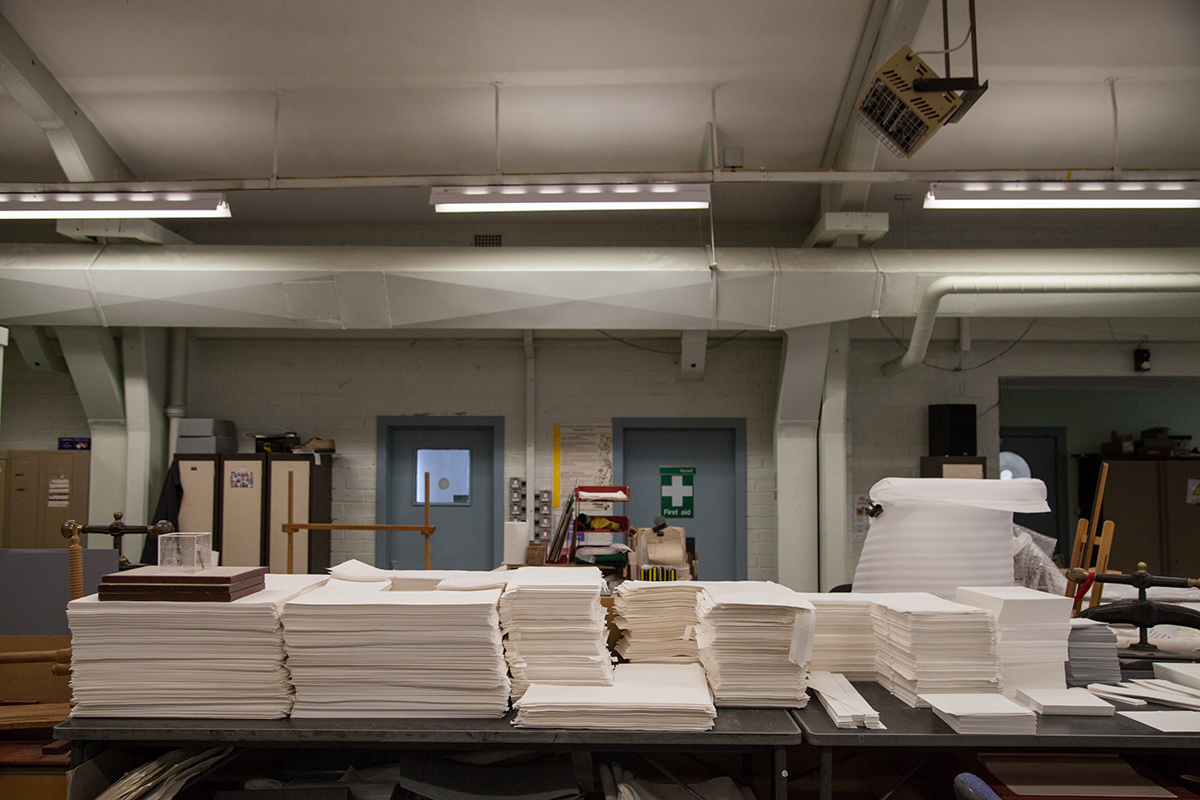
Innovative boxing solutions
Recognising the need to conserve space and speed up the boxing process, we've developed new styles of boxes that are more space efficient. Our 'cabinet box', 'side-on box' and 'side-on boat' are designed for different types of collections. The side-on box, for example, is ideal for small, uniformly sized books, allowing us to box them in batches and save a significant amount of space.
In 2024, we bought a new box-making machine which uses the latest technology to produce a wider range of boxes using computer design. It can also make display stands for exhibition and has a pen tool so we can label the products.
The Team
The Preservation Services Unit has five staff who specialise in making boxes and other supports using archival materials. They are expert in finding solutions for protecting not just books but manuscripts, discs, films and other 3-D objects.
Adoption and adaptation
Since these boxing methods have proven successful, we’re implementing them across suitable collections. Their effectiveness has sparked interest outside the Library, with external customers seeking our boxes for their own collections. Find out more about our box-making service.
This approach is all part of our ongoing commitment to preserving the integrity of our collections for future generations, as part of responsible stewardship.
This article was originally published in our 'Discover' magazine, issue 38, summer 2018.
Dive deeper
Services
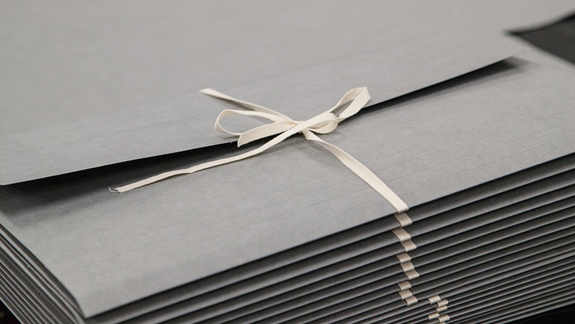
Life in the Library
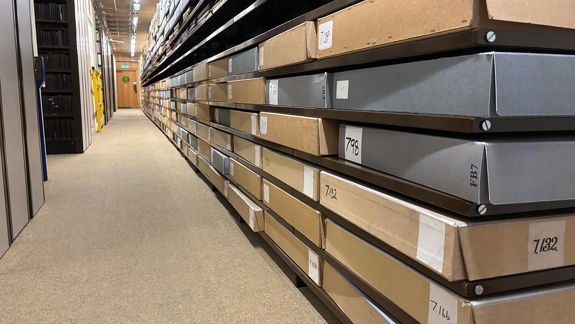
Discover magazine
This article was originally published in our 'Discover' magazine, issue 38, summer 2018.

